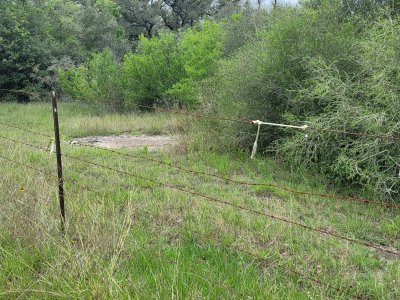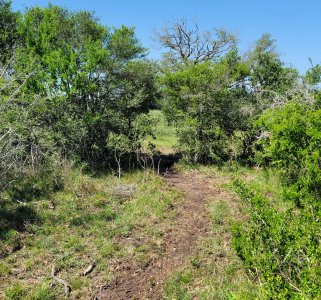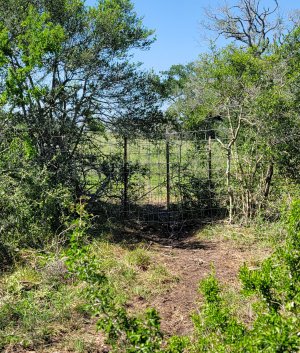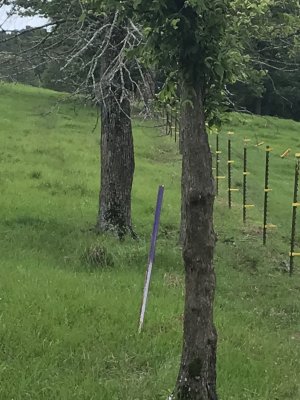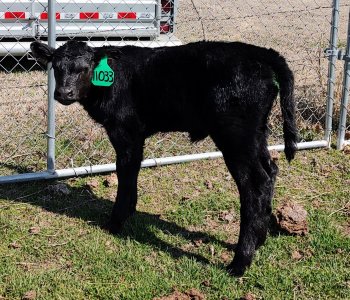Hi all,
I'm just beginning year 3 of hobby farming so I'm still learning. Last night at dusk we got the dreaded call from neighbors that our cattle were out. Thankfully not all of them were out and the escapees were grazing close by. We were able to lure them back by opening a gate and filling their food trough. On to the next issue, finding out how they got out. I have a 4 rung barbed wire fence with the rungs 1 foot apart. I have corner posts configured like an "H" with diagonal tension wires (I'm probably not using the right terms). The other day I went around and tightened the tension wires. Apparently I overtightened one and it later pulled apart. I live on sand and even though I have 6x6 corner posts with 7' of the post length underground, they shifted given the loss of the diagonal tension wire. This caused some slack in the barbed wire. For the middle 2 rungs of barbed wire, the barbs got caught up in post staples within the first couple of posts, keeping it taut from there on, so the slack ended up within a short distance of the corner. There was a spot with a significant amount of fur on the barbs and hoof prints outside the fence, so there was no doubt that it was where they escaped. However, I would in no way categorize the spot as a "hole," just a length with some slack between the 2 middle rungs. I would describe it as a sag in the wire. I've been told more than once that a fence is more of a mental block than a physical block and cattle will get out if they really want to, but I am truly amazed that not only did they find this spot, but that they pushed through. By my estimate they could barely fit. I have also been told that once they find a weakness in your fence, they will never forget it. So, my question is, now that I have fixed the fence and tightened the fence rungs, do I have to do anything else? Will they now repeatedly test this spot? Should I do something for added security? Put in 2 diagonal lengths of barbed wire in a cross configuration between the posts where they escaped?
Thanks for your knowledge and advice!
I'm just beginning year 3 of hobby farming so I'm still learning. Last night at dusk we got the dreaded call from neighbors that our cattle were out. Thankfully not all of them were out and the escapees were grazing close by. We were able to lure them back by opening a gate and filling their food trough. On to the next issue, finding out how they got out. I have a 4 rung barbed wire fence with the rungs 1 foot apart. I have corner posts configured like an "H" with diagonal tension wires (I'm probably not using the right terms). The other day I went around and tightened the tension wires. Apparently I overtightened one and it later pulled apart. I live on sand and even though I have 6x6 corner posts with 7' of the post length underground, they shifted given the loss of the diagonal tension wire. This caused some slack in the barbed wire. For the middle 2 rungs of barbed wire, the barbs got caught up in post staples within the first couple of posts, keeping it taut from there on, so the slack ended up within a short distance of the corner. There was a spot with a significant amount of fur on the barbs and hoof prints outside the fence, so there was no doubt that it was where they escaped. However, I would in no way categorize the spot as a "hole," just a length with some slack between the 2 middle rungs. I would describe it as a sag in the wire. I've been told more than once that a fence is more of a mental block than a physical block and cattle will get out if they really want to, but I am truly amazed that not only did they find this spot, but that they pushed through. By my estimate they could barely fit. I have also been told that once they find a weakness in your fence, they will never forget it. So, my question is, now that I have fixed the fence and tightened the fence rungs, do I have to do anything else? Will they now repeatedly test this spot? Should I do something for added security? Put in 2 diagonal lengths of barbed wire in a cross configuration between the posts where they escaped?
Thanks for your knowledge and advice!

